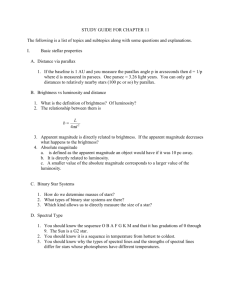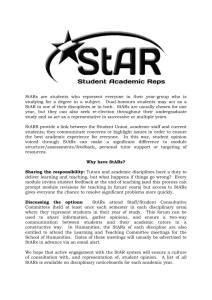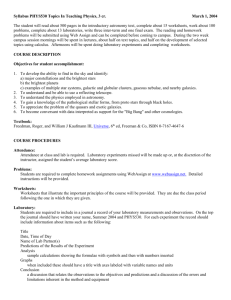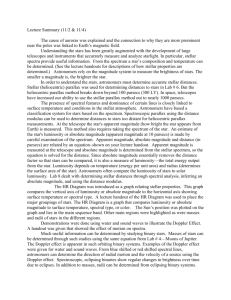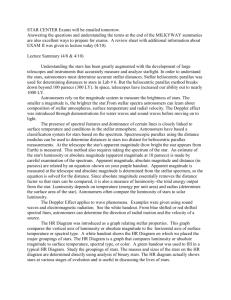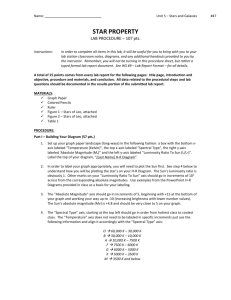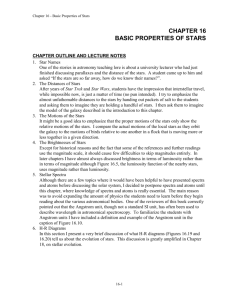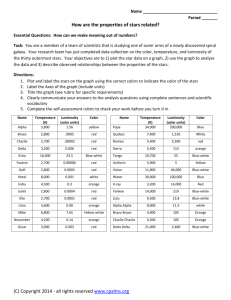Exam 2 Learning Objectives
advertisement
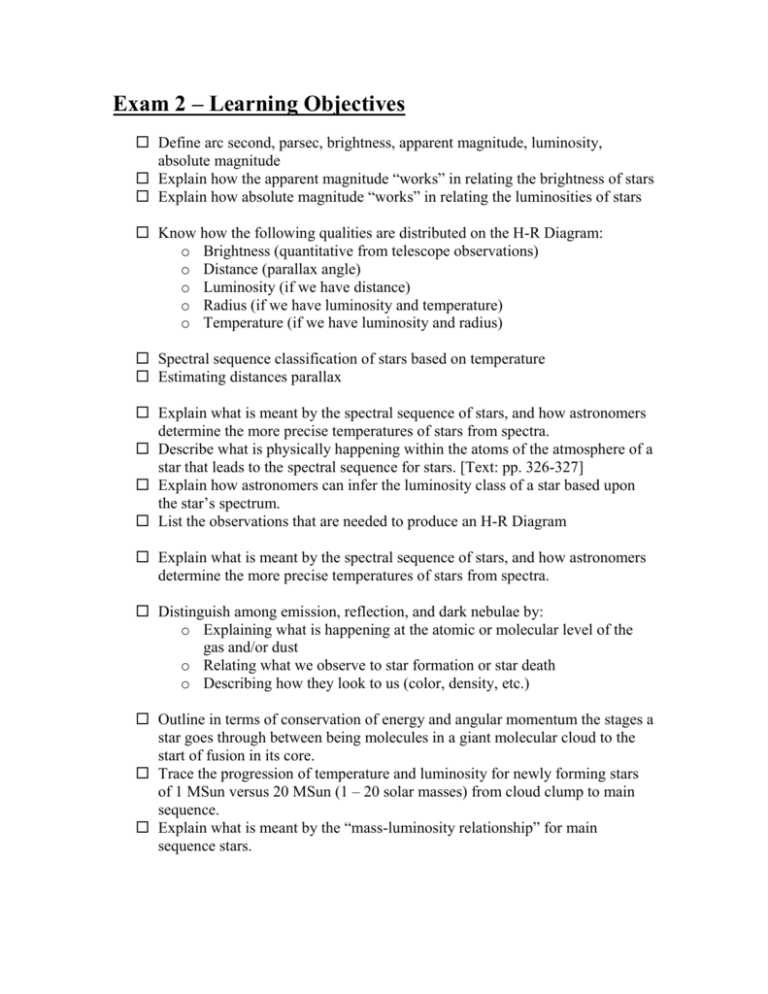
Exam 2 – Learning Objectives Define arc second, parsec, brightness, apparent magnitude, luminosity, absolute magnitude Explain how the apparent magnitude “works” in relating the brightness of stars Explain how absolute magnitude “works” in relating the luminosities of stars Know how the following qualities are distributed on the H-R Diagram: o Brightness (quantitative from telescope observations) o Distance (parallax angle) o Luminosity (if we have distance) o Radius (if we have luminosity and temperature) o Temperature (if we have luminosity and radius) Spectral sequence classification of stars based on temperature Estimating distances parallax Explain what is meant by the spectral sequence of stars, and how astronomers determine the more precise temperatures of stars from spectra. Describe what is physically happening within the atoms of the atmosphere of a star that leads to the spectral sequence for stars. [Text: pp. 326-327] Explain how astronomers can infer the luminosity class of a star based upon the star’s spectrum. List the observations that are needed to produce an H-R Diagram Explain what is meant by the spectral sequence of stars, and how astronomers determine the more precise temperatures of stars from spectra. Distinguish among emission, reflection, and dark nebulae by: o Explaining what is happening at the atomic or molecular level of the gas and/or dust o Relating what we observe to star formation or star death o Describing how they look to us (color, density, etc.) Outline in terms of conservation of energy and angular momentum the stages a star goes through between being molecules in a giant molecular cloud to the start of fusion in its core. Trace the progression of temperature and luminosity for newly forming stars of 1 MSun versus 20 MSun (1 – 20 solar masses) from cloud clump to main sequence. Explain what is meant by the “mass-luminosity relationship” for main sequence stars. List the steps astronomers need to take to determine the “B – V” color of a star. Explain why it is advantageous to use the visual magnitude and the stars’ colors in a color-magnitude diagram to study clusters of stars Summarize why star clusters are ideal for studying the effects of evolution on a star’s temperature, luminosity, and radius Explain why the turn-off temperature (color) of the stars in a cluster is a good indicator of the age of the cluster. Describe how astronomers determine the age of a cluster of stars from its color-magnitude diagram Given actual CMDs for open clusters, rank the clusters according to age Contrast open and globular clusters when discussing age, location in the galaxy, and number of stars in the cluster Summarize the future of the Sun on a rough timescale. Apply the basics of the conservation of energy and the battle between gravity and outward pressure to what “drives” a star to evolve at each major stage of evolution. Explain what is meant by subgiant, red giant branch, electron degeneracy, helium flash, horizontal branch, planetary nebula, white dwarf Outline the basic stages a massive star goes through in its evolution from a mainsequence star to a supernovae explosion. Contrast these stages to those a sun-like star would undergo. Summarize current theories of where the elements in the periodic chart originated. Explain what a white dwarf is and what its fate is. State why we expect the Sun to be a white dwarf someday. Describe the last few moments of a very massive star Collapse of the core into a neutron star Neutrinos and rebound and SN explosion Formation of heavy elements Answer: Theoretically, what is a pulsar? Observationally, what is a pulsar? List 3 of the intrinsically pulsating variable stars giving The kinds of stars that they were while on the MS An estimate of the range of periods Approximately where the stars are found on the HRD Describe the mechanism thought to be driving the pulsation Relate the battle between outward pressure and gravity to an example used earlier in the quarter State definition of black hole and event horizon Contrast Newton’s concept of gravity with Einstein’s spacetime Explain what is meant by gravitational redshift Summarize the difference between reference frames for object falling into black hole and an observer’s More objectives from Friday, Monday, and possibly Wednesday






